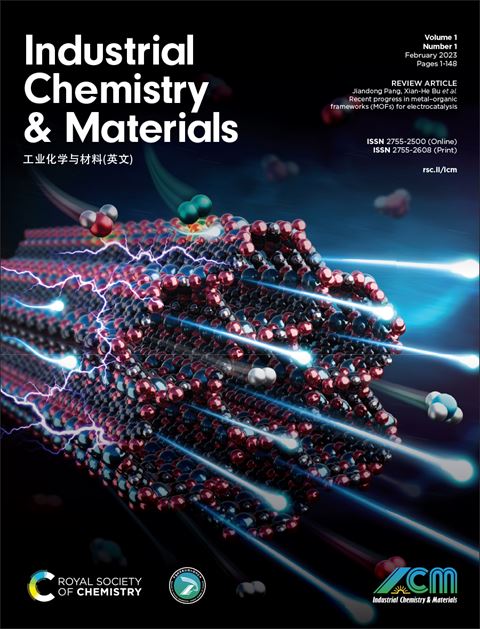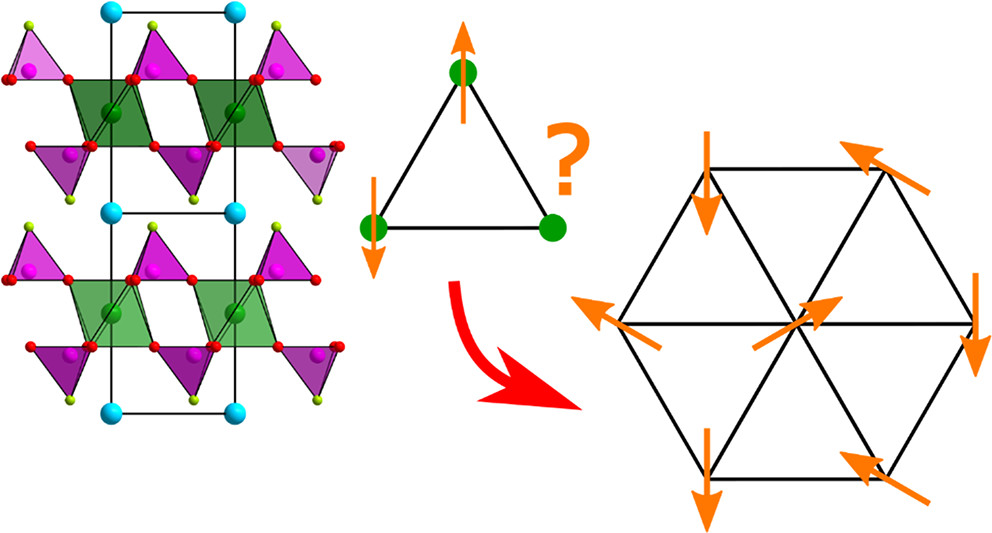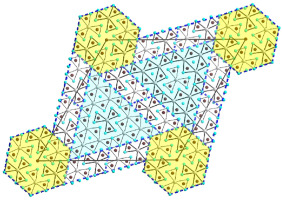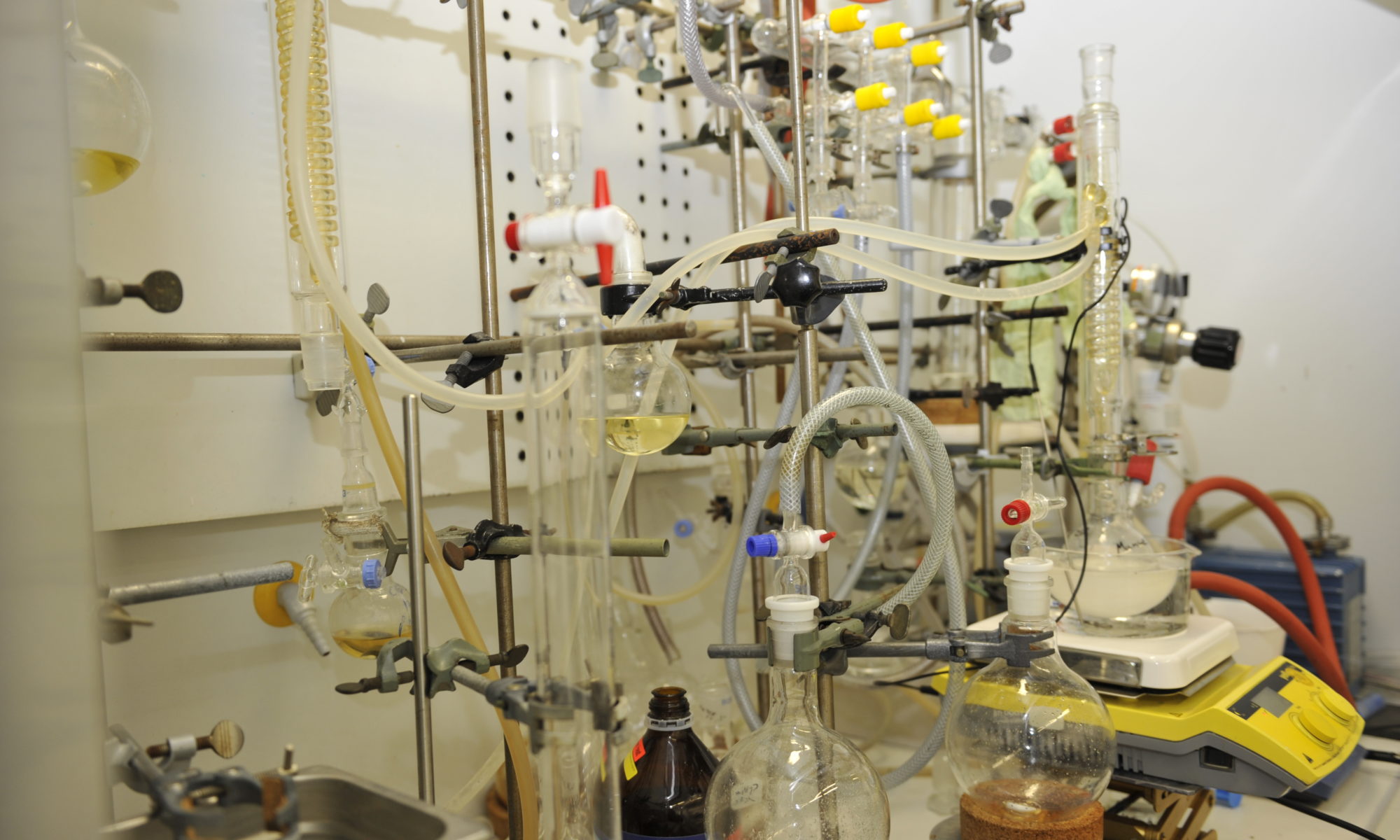2022.01.12
Two new PhD positions
We are looking for two new PhD students! One student will have the opportunity to work on Novel Routes to Crystal Engineering: Controlling Crystallization through Ionic Liquids. The other student will work on Ionic Liquids as a Transformative Tool in Nanosynthesis. Follow the links to learn more about the projects and how to apply. The application deadline is 1st February 2022.
2022.04.22
HOT new article!
AVM and Dr. Oli Hammond have just published a new paper on Ionic liquids and deep eutectics as a transformative platform for the synthesis of nanomaterials in Chemical Communications. Their paper is part of the ongoing web-collection featuring the latest articles published in ChemComm that have been marked as HOT by our Editors and trusted Reviewers. Their review demonstrates that these ionic liquids (ILs) and deep eutectic solvents (DES) are great green alternatives for producing nanomaterials, as well as functioning as powerful green synthesis tools when combined with unconventional synthesis techniques such as microwave, ultrasound and sputtering. Most importantly, they promote that when ILs and DES are approached holistically, new universal manufacturing techniques that provide solutions to the existing problems of nanomanufacturing are enabled. Furthermore, that will open new possibilities for controlling the growth and assembly of nanostructures. The review of examples in the article illustrates this power of ILs and DES in the improved manufacturing of nanomaterials. In short, ILs and DES look to be some of the future’s green and efficient problem-solvers within nanotechnology.
2022.03.08
PhD positions
We are again accepting applications for PhD students. Two positions are available: Advancing Crystal Engineering through Ionic Liquids and Ionic Liquids – Game Changers in Nanosynthesis. You can apply through Aarhus University’s Graduate School of Natural Sciences. The application deadline is 23.59 (Central European Time), 1st May 2022. Please read the application guide before you submit your final application.
2022.04.06
Cover Material!

The latest article from the Mudring group has been featured as the cover of Chemical Communications’ Vol 54 (28) issue! Congratulations to the authors and the talented artist Inna Bigun!
2022.05.02
New postdoc position
Professor Mudring is hiring a new postdoc in Ionic Liquids – Synthesis of Organic, Organometallic and Organic-Inorganic Hybrid Materials. The application deadline is 8th May. You can apply here.
2022.05.23
Introducing our new scientific assistant  We are pleased to welcome Alina Fedorets to the group. You can read about her journey to Aarhus here.
We are pleased to welcome Alina Fedorets to the group. You can read about her journey to Aarhus here.
2022.06.13
Magnetic phase diagram revealed using neutron diffraction
In a collaboration with colleagues from 5 countries, Siebeneichler et al. combined X-ray diffraction, magnetization and neutron diffraction to establish a universal phase diagram for ThCr2Si2-type solid solutions of REMn2X2. They were able to relate the emergence of magnetic incommensurability to structural features. You can read the full paper here.
2022.06.22
From a Dense Structure to Open Frameworks: The Structural Plethora of Alkali Metal Iron Fluorophosphates
In the latest article from the Mudring group, they demonstrate that using ionic liquids as the reaction medium, structure templates, and mineralizer, all-in-one, allows for the design of transition metal fluorophosphate of varied dimensionality. Aside from engineering of magnetic exchange interaction, which is extremely exciting particularly from a fundamental viewpoint, their synthetic approach might lead to new battery cathode materials! You can read the full article here. 
2022.07.08
New intermetallic research from our lab
From the group’s latest paper, relativistic effects show in chemical bonding: Bader analysis reveals a strong anionic character for the transition metals M = Pd, Pt in Ca3M4Bi8. Thus, the compounds have to be called a palladide and platinide, just like halides! You can read the new article here.
2022.07.12
New fellowship
Prof. Anja-Verena Mudring has just been named a fellow at the LE STUDIUM Loire Valley Institute for Advanced Studies! Watch this space for exciting news about the collaborative research on ¨Lanthanide-based luminescent hybrid nanomaterials for theragnostic applications¨ with Svetlana Eliseeva & Stephane Petoud at Centre National de la Recherche Scientifique in Orléans.
2022.08.09
New journal: Industrial Chemistry and Materials

2022.08.19
Latest publication
Frustration and 120° Magnetic Ordering in the Layered Triangular Antiferromagnets AFe(PO3F)2 (A = K, (NH4)2Cl, NH4, Rb, and Cs)  The newest publication from the Mudring group is here! The paper presents a new family of layered iron oxofluorophosphates, AFe(PO3F)2, that were made by ionothermal methods using PF6 ionic liquids. In the context of frustrated triangular antiferromagnets, the close structural relationship between the layered compounds as well as polymorphism enables studying the magnetic properties as a function of cation identity and crystal symmetry.
The newest publication from the Mudring group is here! The paper presents a new family of layered iron oxofluorophosphates, AFe(PO3F)2, that were made by ionothermal methods using PF6 ionic liquids. In the context of frustrated triangular antiferromagnets, the close structural relationship between the layered compounds as well as polymorphism enables studying the magnetic properties as a function of cation identity and crystal symmetry.
2022.09.06
Developing luminescent nanomaterials that can meet the application needs for a sustainable society
A new publication from the group Phonon-Mediated Nonradiative Relaxation in Ln3+-Doped Luminescent Nanocrystals tackles the unsatisfactory photoluminescence efficiency of Ln3+-doped nanocrystals that severely restricts their practical application. The publication shows that phonon-mediated nonradiative relaxation in Ln3+-doped nanocrystals is substantially influenced by a variety of factors. Moreover, without explicit knowledge and consideration of these factors, property analysis will probably end up with misinterpretation. Thus the use of knowledge established for bulk materials to interpret the experimental findings collected at the nanoscale should be cautiously scrutinized. The authors conclude that systematic studies are needed for the informed development of Ln3+-doped luminescent nanomaterials that can meet the application needs for a sustainable society.
2022.09.26
Crystal structures from collaborations
Crystal structures with symmetry are the art of nature – the electronic structure has its beauty, too. Read more about our results from a long-standing collaboration with colleagues from the Ivan Franko National University of Lviv, Ukraine:
Crystal and electronic structures of a new hexagonal silicide Sc38Co144Si97

2022.11.08
More cover material
The Mudring group’s work with Ukrainian collaborators made it to the cover of the Journal of Solid State Chemistry!

2022.11.18
New Open Framework Material Discovered!
The Mudring group and collaborators have described a new class of open framework materials (OFMs). OFMs, such as zeolites, contain voids in their structures that give them attractive functionalities including catalysis, gas storage, separation and ion exchange. The framework structures of practically all known inorganic OFMs are restricted to tetrahedral building blocks, such as silicate (SiO44-). In their paper, however, the authors describe their discovery of a whole new class of OFMs with exclusively octahedral building blocks forming the open framework. The octahedral building blocks of these new compounds are reminiscent of the zero-dimensional units that form polyoxometalates (POMs), which are known for their interesting magnetic properties. Repeating those units in three dimensions in an open framework make the authors’ new OFMs interesting for new applications in magnetics, like spintronics for the green transition. The authors’ approach to synthesising these new materials is key. The use of ionic liquids – that act as the reaction medium, mineralizer, and templating agent – allows for the formation of the open framework instead of dense phases that form by using traditional solvents. Read the article here. 
2022.12.07
New publication from the Rogers-Mudring collaboration
The Rogers-Mudring collaboration is going strong. Just published are new results from the collaboration that establish solid design guidelines for ionic liquids. This work was also part of Dr. Olivier Renier’s PhD thesis. You can read the article here.

2022.12.12
Integrating Green Chemistry into Chemistry Education
Integrating Green Chemistry into chemistry education is more important than ever. It is really critical that we implement aspects of Green Chemistry and Education in chemistry curricula at all levels. Prof. Mudring had the honor of hosting Jamie Ferguson as a guest professor in the Intelligent Advanced Materials group at Aarhus University for her sabbatical, where she also gave the Sigma Aldrich Green Chemistry lecture on implementing green chemistry in higher education. This is just one example of how collaborations in Green Chemistry around the globe are growing stronger. Fighting global challenges needs global efforts – and a highly knowledgeable, educated workforce. Integrating Green Chemistry into Chemistry Education 
